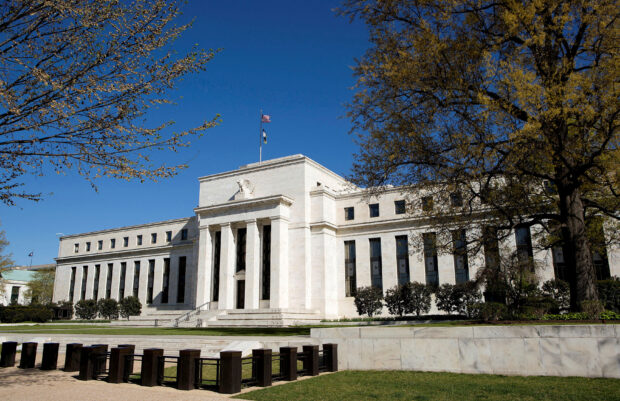
The Federal Reserve Building stands in Washington April 3, 2012. REUTERS/Joshua Roberts/File photo
The Federal Reserve said on Tuesday that it officially saw a net negative income of $114.3 billion in 2023, a record loss tied to expenses related to managing the U.S. central bank’s short-term interest rate target.
The loss last year follows $58.8 billion in net income in 2022, the Fed said. The numbers released were an audited tally following preliminary numbers reported earlier this year. The Fed has stressed repeatedly that net negative income does not impede its ability to operate or conduct monetary policy.
By law, the Fed hands over any profits after covering operational expenses to the Treasury. The Fed earns income from services it provides the financial system and from interest income on securities it owns. It has earned significant profits over recent years amid very low rates and large levels of bond holdings.
The Fed’s move to aggressively boost the federal funds rate starting in the spring of 2022 has upended central bank finances. To cool inflation pressures, the Fed lifted the target from near zero levels to its current 5.25 percent to 5.5 percent range.
The Fed maintains that target by paying banks, money funds and other financial firms to park cash at the central bank, and that is meant paying out substantially more in interest.
Interest expenses up
The Fed’s audited interest expenses for banks’ reserve balances hit $176.8 billion last year, up $116.4 billion from 2022’s level, while interest payouts from its reverse repo facility was $104.3 billion last year, from $41.9 billion the prior year.
READ: Borrowing from key Fed lending facilities cools a bit in latest wee
Meanwhile, the income the Fed earned from bonds it owns was at $163.8 billion last year, little changed from 2022.
The Fed can create money to fund its operations when dealing with operating losses which means it faces no obstacles to operate. It captures its loss in an accounting device called a deferred asset.
The official level of the deferred asset stood at $133.3 billion at the close of 2023. As of March 20, it had risen to $157.8 billion and it is unclear how much larger it will get.
READ: Fed boosts focus on liquidity, other risks as economy weakens–Barr
When the Fed returns to profitability it will use excess earnings to reduce the deferred asset and when it is extinguished the Fed will start returning excess profits to the Treasury again.
Fed officials have noted they’ve handed back substantial sums to the Treasury over recent years. A St. Louis Fed report last year said it could take years before the Fed is able to once again return profits to the government.

